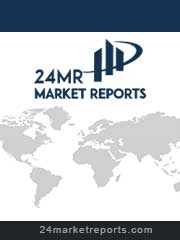
Download FREE Report Sample
Download Free sampleMARKET INSIGHTS
Global Integrated Smart Shower Toilet market size was valued at USD 1.11 billion in 2024. The market is projected to grow from USD 1.21 billion in 2025 to USD 2.03 billion by 2032, exhibiting a CAGR of 9.2% during the forecast period.
Integrated Smart Shower Toilets are advanced bathroom fixtures combining automated flushing systems with hygiene-enhancing features. These premium products incorporate water jets for bidet functionality, seat warmers, air dryers, deodorizers, and smart sensors for touchless operation. Some high-end models even offer health monitoring capabilities through urine analysis sensors and stool quality detection.
The market growth is primarily driven by increasing urbanization and rising disposable incomes in developing economies. However, the premium pricing of these units (typically ranging from USD 1,000 to USD 8,000) currently limits adoption to luxury residential and high-end commercial segments. Leading manufacturers like Toto and Kohler are addressing this challenge by introducing more affordable smart toilet models while maintaining core functionality, which is expected to broaden the consumer base in coming years.
Rising Demand for Smart Home Integration Fuels Market Expansion
The global smart home market is projected to reach $338 billion by 2030, with bathroom automation emerging as a key growth segment. Integrated smart shower toilets are gaining traction as consumers increasingly seek connected, automated solutions that align with modern lifestyles. Studies show households adopting smart home technologies prioritize convenience (72%), hygiene (68%), and energy efficiency (54%) - all features offered by premium smart toilet systems. Leading manufacturers are responding by developing Wi-Fi enabled models with voice control compatibility through platforms like Alexa and Google Home, further driving adoption among tech-savvy consumers.
Post-Pandemic Hygiene Awareness Accelerates Market Penetration
To know more about market statistics, Download a FREE Sample copy
The COVID-19 pandemic fundamentally shifted consumer attitudes toward hygiene, with 79% of global consumers reporting increased focus on sanitation. This behavioral change has significantly benefited the smart toilet market, as touchless operation and self-cleaning functions address these hygiene concerns. In Japan - the most mature smart toilet market - adoption rates exceed 80% in urban households, demonstrating the potential for growth in other developed markets. Recent data shows North American smart toilet sales grew 37% year-over-year in 2023, with European markets showing similar upward trends. The integration of UV sterilization and antimicrobial surfaces in newer models further strengthens this hygiene-driven growth.
➤ For instance, Toto's 2024 product line features an advanced photocatalytic cleaning system that reduces bacteria by 99.9%, appealing to health-conscious buyers.
Furthermore, the aging population in developed nations presents additional growth opportunities as elderly consumers value the accessibility features of smart toilets, including height-adjustable seats and fall-detection sensors. This demographic shift is expected to sustain long-term market expansion beyond the immediate post-pandemic period.
High Installation Costs and Infrastructure Limitations Hinder Adoption
Despite strong demand drivers, the integrated smart shower toilet market faces significant adoption barriers. The average price premium for smart toilets ranges from 300-800% compared to conventional models, placing them out of reach for many middle-class consumers. In developing markets, where the median household spends less than $200 annually on bathroom fixtures, market penetration remains below 5%. Even in developed nations, retrofitting existing homes with the necessary electrical and plumbing infrastructure adds 20-35% to the total installation cost, deterring widespread adoption.
Additional Constraints
Technical Complexities
Smart toilet systems require continuous water pressure (minimum 15-20 psi) and stable electrical supply, conditions not universally available in older residential buildings. Surveys indicate 42% of potential buyers abandon purchases after discovering their homes require expensive plumbing upgrades. The need for professional installation (averaging $450-$900) further increases the total cost of ownership.
Maintenance Challenges
The sophisticated mechanisms in smart toilets have higher failure rates than conventional models, with electronic components being particularly vulnerable to moisture damage. Consumer reports indicate first-year maintenance costs averaging $120-300, compared to just $25-50 for standard toilets. This ongoing expense discourages price-sensitive customers despite the long-term benefits.
Technological Innovations in Water Conservation Create New Market Segments
Emerging water scarcity concerns (global freshwater demand is projected to exceed supply by 40% by 2030) are driving innovation in smart toilet technology. Next-generation models featuring closed-loop water recycling systems can reduce household water consumption by up to 25,000 gallons annually. Several manufacturers now offer smart toilets with AI-powered usage tracking that automatically optimizes water flow based on individual patterns. These eco-friendly models are gaining traction in drought-prone regions like California, where residential water restrictions have become commonplace.
Healthcare Monitoring Features Open New Revenue Streams
The integration of health diagnostics represents perhaps the most promising market opportunity. Advanced models now include non-invasive sensors that analyze urine content (glucose, proteins, pH levels) and stool characteristics, with some providing basic medical assessments through companion apps. The global digital health market's projected 28% CAGR through 2030 suggests strong potential for these healthcare-linked smart toilet systems. Early adopters include senior living facilities and hospitals, where continuous health monitoring justifies the premium pricing.
Data Privacy Concerns Threaten Consumer Trust
As smart toilets collect increasingly sensitive health data, privacy issues emerge as a critical challenge. A 2024 consumer survey revealed that 68% of respondents expressed concerns about companies collecting and storing personal hygiene data. Manufacturers must balance the benefits of data-driven health insights against growing regulatory scrutiny—the EU's proposed AI Act would classify some smart toilet features as high-risk applications, requiring rigorous compliance measures. High-profile data breaches in other IoT sectors have made consumers wary of connected bathroom devices.
Other Emerging Challenges
Standardization Issues
The lack of universal connectivity standards creates interoperability problems, with various manufacturers using proprietary protocols. This fragmentation discourages consumers who fear vendor lock-in, particularly given the 10-15 year expected lifespan of premium bathroom fixtures.
Cultural Barriers
In regions without bidet culture, consumers remain skeptical about water-based cleaning systems. Educational marketing campaigns have achieved limited success, with only 32% of North American consumers comfortable transitioning from traditional toilet paper-based hygiene methods.
Floor-Standing Segment Dominates Due to Ease of Installation and Consumer Preference
The market is segmented based on type into:
Floor-standing
Subtypes: Standard, premium luxury models
Wall-mounted
Subtypes: Standard flush, water-saving models
Household Segment Leads Market Due to Rising Smart Home Adoption
The market is segmented based on application into:
Household
Commercial
Subtypes: Hotels, offices, hospitals
Others
Innovation and Strategic Positioning Drive Market Leadership in Smart Toilet Segment
The global integrated smart shower toilet market features a dynamic competitive environment with Japanese and Chinese manufacturers dominating the landscape. TOTO Ltd. leads the market with approximately 25% global share in 2024, leveraging its proprietary Washlet technology and extensive distribution network across 50+ countries. The company's success stems from continuous R&D investments, having launched 15+ smart toilet models in the past three years alone featuring advanced AI health monitoring capabilities.
LIXIL Corporation follows closely with its American Standard and Grohe brands, holding an estimated 18% market share through strategic acquisitions and partnerships in Western markets. Their recent collaboration with IoT platform providers has enabled seamless smart home integration that appeals to millennial homeowners. Meanwhile, Panasonic differentiates itself through energy-efficient models and cybersecurity-focused designs, particularly strong in Southeast Asian markets.
The market sees intense competition from emerging Chinese manufacturers like Jomoo and Haier who offer competitively priced smart toilet solutions (30-40% lower than premium brands). These players are rapidly expanding overseas through OEM partnerships and e-commerce channels. While currently holding smaller market shares (5-7% individually), their growth momentum poses significant disruption potential to established brands.
Price competition has intensified as more regional players such as Huida and Shunjie enter the market with budget-friendly smart toilet options. However, premium brands maintain pricing power through value-added features including UV sterilization, personalized user profiles, and voice control integration - technologies that command 20-25% price premiums in developed markets.
TOTO Ltd. (Japan)
LIXIL Corporation (Japan)
Panasonic Corporation (Japan)
Kohler Co. (U.S.)
Jomoo Group (China)
Haier Group (China)
Midea Group (China)
Arrow Home (China)
Brondell Inc. (U.S.)
Coway Co., Ltd. (South Korea)
The global integrated smart shower toilet market is experiencing robust growth, driven by increasing demand for smart home ecosystems and luxury bathroom amenities. Valued at approximately $1.1 billion in 2024, the market is projected to expand at a CAGR of 9.2%, reaching $2 billion by 2032. Consumers prioritize hygiene-first solutions, particularly after heightened health awareness due to global sanitation concerns. Leading manufacturers are integrating Internet-of-Things (IoT) capabilities such as remote control via smartphones, voice activation, and personalized user profiles. High-end residential projects in North America and Europe account for over 55% of premium smart toilet installations, while Asia-Pacific leads in volume due to rapid urbanization and cultural familiarity with bidet functionality.
Health Monitoring Features
Advanced models now incorporate non-invasive health sensors, analyzing biomarkers in urine and stool to track glucose levels, hydration, and even early signs of infections. This functionality aligns with preventative healthcare trends, particularly among aging populations in Japan and South Korea, where 30% of smart toilets sold in 2024 included such capabilities. However, data privacy concerns require manufacturers to implement encrypted local storage rather than cloud-based systems.
Water conservation technologies are becoming a key competitive differentiator. Smart toilets now use 40-60% less water than conventional models through features like AI-powered usage optimization and dual-flush systems calibrated to waste composition. In water-scarce regions like California and the UAE, regulatory incentives for low-flow fixtures have accelerated adoption. Meanwhile, self-cleaning nano-coatings reduce chemical detergent usage by 75%, appealing to eco-conscious buyers. Industry leaders like Toto and Kohler are investing heavily in circular economy models, offering leasing programs with modular upgrades to extend product lifespans.
North America
The North American market for integrated smart shower toilets is characterized by strong consumer adoption of smart home technologies and increasing health awareness. The United States leads regional demand, driven by high disposable incomes and a preference for premium bathroom fixtures featuring bidet functions, automated cleaning, and water-saving technologies. Canada shows steady growth due to urban housing developments incorporating smart bathroom solutions. While high installation costs (~$1,200-$4,000 per unit) remain a barrier, manufacturers are addressing affordability through modular solutions. Water conservation regulations in drought-prone states like California are accelerating the transition from traditional toilets to water-efficient smart models. The regional market benefits from strong distribution networks of Japanese brands (Toto, Panasonic) and local players (Kohler) innovating with voice-activated controls and AI-powered health monitoring features.
Europe
Europe's market thrives on strict hygiene standards and eco-conscious consumers favoring water-efficient bathroom technologies. Germany and France dominate sales, where smart toilets with UV sterilization and wastewater recycling capabilities gain traction in luxury residential and healthcare sectors. The Nordic countries exhibit the highest per capita adoption rates due to widespread smart home infrastructure connectivity (over 65% household internet penetration supporting IoT devices). EU energy efficiency directives push innovation in low-power consumption models, though retrofitting challenges in historic buildings constrain the replacement market. Southern European countries show slower adoption due to price sensitivity, creating opportunities for mid-range Asian imports (Jomoo, Huida). The commercial sector - particularly premium hotels and airports - accounts for 38% of regional installations as part of contactless restroom initiatives.
Asia-Pacific
As the largest and fastest-growing regional market (projected 11.3% CAGR 2024-2030), Asia-Pacific benefits from massive urbanization and smart city developments across China, Japan, and South Korea. Japan remains the technology leader, where 82% of households use smart toilets with integrated bidets - a standard developed through decades of Toto and LIXIL innovation. China's market expands through domestic brands (Haier, Dongpeng) offering economical smart-shower toilet combinations (average $500-900). Southeast Asia shows uneven adoption; while Singapore's luxury condominiums widely incorporate smart toilets, emerging markets like Indonesia still focus on basic functionality. India's market grows through hospitality sector demand, though residential adoption lags due to plumbing infrastructure challenges requiring significant bathroom renovations for installation.
South America
The South American market remains in early development stages, concentrated in Brazil's affluent urban centers and luxury real estate projects. High import duties (averaging 35%) on smart bathroom fixtures constrain market accessibility, leading local manufacturers to develop simplified smart toilet models without advanced health tracking features. Argentina shows niche demand in high-end hotels catering to international tourists, while other markets face economic instability limiting discretionary purchases. Basic bidet toilet seat attachments represent most sales as affordable alternatives to full smart systems. Infrastructure limitations in water pressure reliability and electrical safety standards slow market maturation, though this creates opportunities for manufacturers to develop robust, low-voltage solutions tailored to regional challenges.
Middle East & Africa
The GCC countries dominate regional demand, where luxury real estate projects in UAE and Saudi Arabia integrate smart toilets as premium bathroom centerpieces, often with gold-plated fixtures and bespoke designs. Temperature control features prove particularly valuable in the region's hot climate. South Africa's upscale hospitality sector drives most installations, while North African markets remain negligible due to low smart home penetration. High dependence on imports leads to premium pricing (average $1,800 for mid-range models), stimulating interest in cost-competitive Chinese products with basic spray functions. The lack of standardized plumbing codes across the region poses installation challenges, though this is gradually improving through Dubai's smart city regulations mandating water-efficient fixtures in new constructions.
This market research report offers a holistic overview of global and regional markets for the forecast period 2025–2032. It presents accurate and actionable insights based on a blend of primary and secondary research.
✅ Market Overview
Global and regional market size (historical & forecast)
Growth trends and value/volume projections
✅ Segmentation Analysis
By product type or category
By application or usage area
By end-user industry
By distribution channel (if applicable)
✅ Regional Insights
North America, Europe, Asia-Pacific, Latin America, Middle East & Africa
Country-level data for key markets
✅ Competitive Landscape
Company profiles and market share analysis
Key strategies: M&A, partnerships, expansions
Product portfolio and pricing strategies
✅ Technology & Innovation
Emerging technologies and R&D trends
Automation, digitalization, sustainability initiatives
Impact of AI, IoT, or other disruptors (where applicable)
✅ Market Dynamics
Key drivers supporting market growth
Restraints and potential risk factors
Supply chain trends and challenges
✅ Opportunities & Recommendations
High-growth segments
Investment hotspots
Strategic suggestions for stakeholders
✅ Stakeholder Insights
Target audience includes manufacturers, suppliers, distributors, investors, regulators, and policymakers
-> Key players include Toto, LIXIL, Panasonic, Kohler, Jomoo, Haier, Midea, Coway, Brondell, and Bio Bidet, among others.
-> Key growth drivers include rising demand for smart home automation, increasing hygiene awareness, technological advancements in bidet features, and urbanization trends.
-> Asia-Pacific holds the largest market share, driven by high adoption in Japan and China, while North America shows the fastest growth potential.
-> Emerging trends include health monitoring capabilities, voice-controlled features, water-saving technologies, and IoT integration in smart toilet systems.

Speak to our Custom Research Team and get the Custom Research in a budget
Custom ResearchFrequently Asked Questions ?
A license granted to one user. Rules or conditions might be applied for e.g. the use of electric files (PDFs) or printings, depending on product.
A license granted to multiple users.
A license granted to a single business site/establishment.
A license granted to all employees within organisation access to the product.
Upto Working 24 to 48 hrs
Upto 72 hrs max - Weekends and Public Holidays
Online Payments with PayPal and CCavenue
Wire Transfer/Bank Transfer
Hard Copy




 Industry Market Size
Industry Market Size SWOT Analysis
SWOT Analysis Industry Major Players
Industry Major Players Revenue Forecasts
Revenue Forecasts Historical and Forecast Growth
Historical and Forecast Growth Profitability Analysis
Profitability Analysis
























